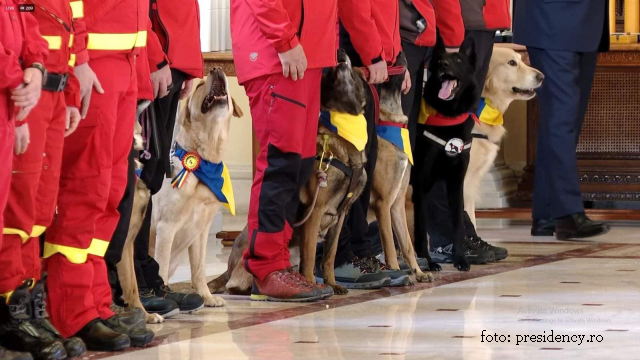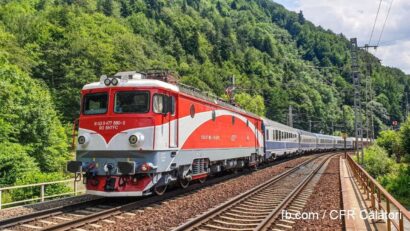The Story of Search and Rescue Dogs
The disaster caused by the earthquakes in Turkey has been a call to solidarity

Ana-Maria Cononovici, 06.03.2023, 18:53
The disaster caused by the earthquakes in Turkey has been a call to solidarity. Romania sent over two rescue teams, which paired up man with dog, considered the most effective in finding survivors under rubble.
Oana Ciora, president of the Transilvania Rescue Dog Association, went to Turkey with one of the teams, and told us the story of the rescue dogs:
“The story of the dogs starts with the people who partner up with them. Our organization, a volunteer organization, brings together willing people who wish to train dogs for search and rescue. Each of our volunteers bring their own dog. Some of the dogs had started training six or eight weeks previously, others started later, the moment the owner contacted our association. For instance, for Dino, the dog I took to Turkey, everything started the moment he got to our home, and after about seven weeks we knew what we wanted for him. He is also a gift from a teammate, and it was obvious this was going to be his career, since he was very much fit for search and rescue.”
We asked Oana Ciora what a dog needs in order to be fit for search and rescue:
“Its not about a certain breed, it is about a type of dog. For instance, if we make an analogy with emergency workers, such as firefighters, who have to meet some physical criteria, concentration criteria, and motivation, in order to be able to take part in such activities. In terms of olfactory abilities, any dog could meet this criterion, but there are more criteria to meet, in terms of mobility and agility. If we look at seeking people under rubble, the dog has to be nimble, sure on its feet, on surfaces that are not friendly, and are not level. We have to have a dog with a friendly temperament, a trustworthy dog, which can be easily motivated, one that is interested in what we have to offer it, such as food or toys. The dog has to have a purpose for which it is looking for survivors. And then, each of the dogs looks for the missing people in order to get a reward, which they know they get after such activities. With that in mind, the dog searches for the people who are the key to their reward.”
Long shifts, unpredictable conditions, as well as flying on a military plane, all these were just some of the challenges for the rescue teams. Here with details is Oana Ciorea:
“From the moment we left home to the return, everything was a challenge for everyone, be they man or dog. We are talking about the emotional side, about adapting to obstacles, all the situations we faced, and, of course, the work itself. The latter was probably the easiest to manage. The moment you knew what you had to do, you felt at ease. The rest had a bigger impact, the things we could not really prepare for. That included flying with the military, which is nothing like flying a commercial plane. Also, the way in which the search areas looked, the fact that you had to always pay attention to where you parked your car, where you got off from the vehicle, where to take out the dogs, because any car around could hide a dog guarding it. Then you realized that there are people living in that car, and a dog might guard the family. We faced many things that we could do nothing about, and which we didnt plan for in our training.”
Oana Ciorea told us how a dog is trained, and for how long:
“A rescue dog becomes operational, meaning at a level that allows it to take part in an S&R mission, even easier than the one in Turkey, which was an extreme example, trains for three to four years. It very much depends on the human, how serious they are, how consistent. The dog doesnt attend training by itself, so the human has to maintain discipline and consistency in its training. For instance, we, as an organization, have training sessions three times a week, which means three to four hours of teamwork. In addition, of course, each of our volunteers has to work individually with their dogs, be it for motivation, or for discipline, as well as physical fitness, which is another very important aspect for a search dog. A dog which is physically fit can carry out a more difficult mission. If their physical fitness is not too good, there can by psychological aspects that can affect the dog, resulting in poor performance.”
Oana Ciora told us that, even though this was a very taxing and harrowing experience, she finds reasons for optimism:
“The most emotional in Turkey was to witness the solidarity that this moment produced, and the way in which rescuers from around the world, and I really mean from around the world, got mobilized and went there to help. No country, no matter how well prepared they are, can cope domestically with such an event. The mobilization was truly impressive, and also the fact that we know that if, God forbid, such a thing would happen to us, we would surely benefit from exactly such support from such professional teams as showed up in Turkey. I am sure of this, and, in spite of this whole disaster, it is comforting to know this for sure.”






























